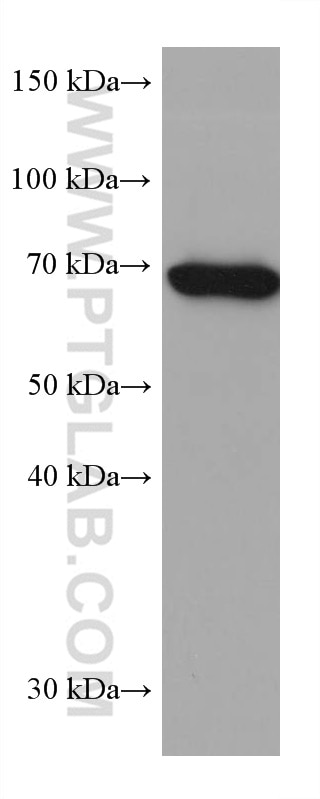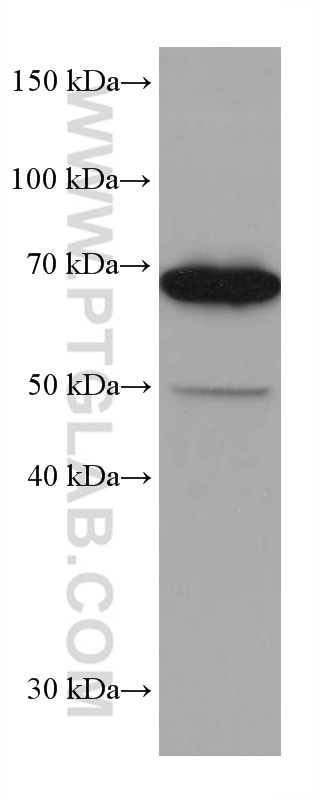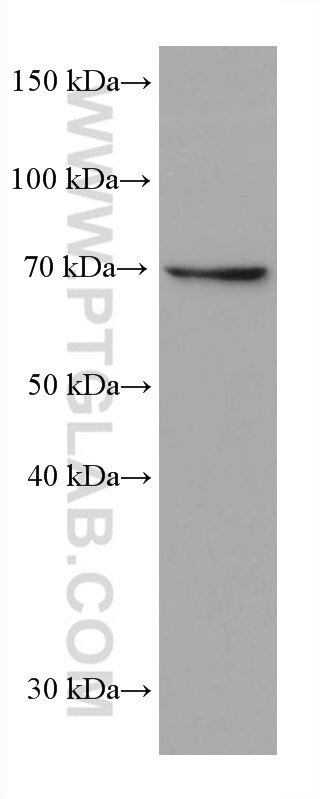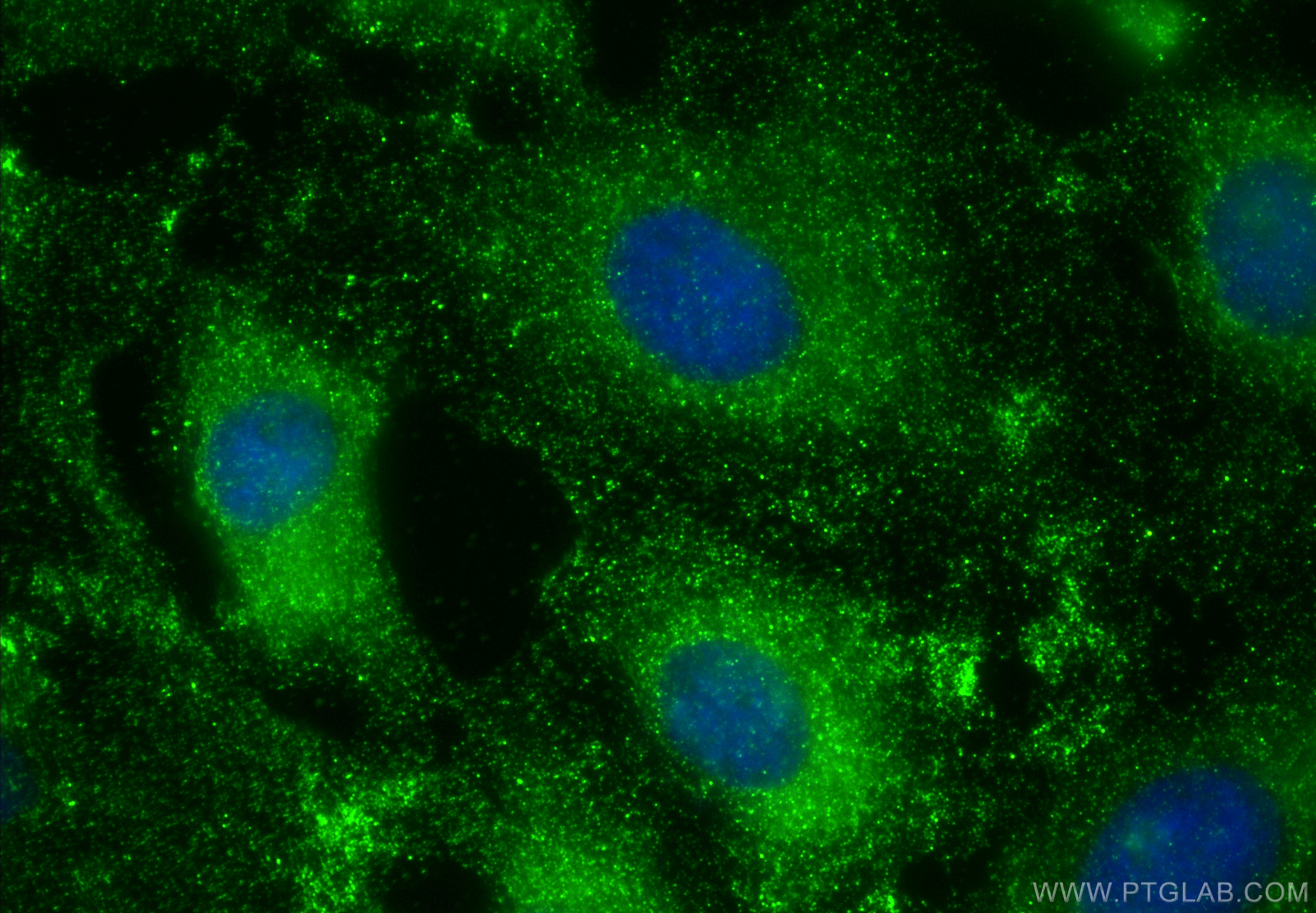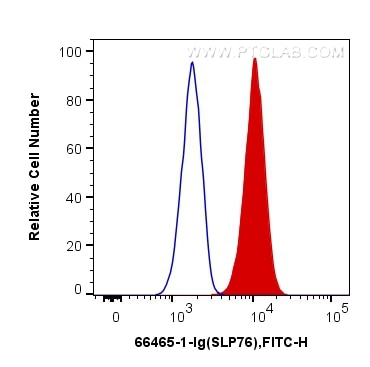Validation Data Gallery
Tested Applications
Recommended dilution
| Application | Dilution |
|---|---|
| It is recommended that this reagent should be titrated in each testing system to obtain optimal results. | |
Product Information
66465-1-PBS targets SLP76 in WB, IF/ICC, FC (Intra), Indirect ELISA applications and shows reactivity with human samples.
| Tested Reactivity | human |
| Host / Isotype | Mouse / IgG1 |
| Class | Monoclonal |
| Type | Antibody |
| Immunogen | SLP76 fusion protein Ag3432 相同性解析による交差性が予測される生物種 |
| Full Name | lymphocyte cytosolic protein 2 (SH2 domain containing leukocyte protein of 76kDa) |
| Calculated molecular weight | 533 aa, 60 kDa |
| Observed molecular weight | 76 kDa |
| GenBank accession number | BC016618 |
| Gene Symbol | SLP76 |
| Gene ID (NCBI) | 3937 |
| RRID | AB_2881833 |
| Conjugate | Unconjugated |
| Form | Liquid |
| Purification Method | Protein A purification |
| UNIPROT ID | Q13094 |
| Storage Buffer | PBS only , pH 7.3 |
| Storage Conditions | Store at -80°C. |
Background Information
LCP2, also named as SLP76, is an adapter protein that acts as a substrate of the T cell antigen receptor (TCR)-activated protein tyrosine kinase pathway. It contains an N-terminal leucine Zip motif, a tyrosine-rich domain, a proline-rich domain and a C-terminal SH2 domain. It is constitutively associated with the growth factor receptor-bound protein 2 (Grb2)-related adapter protein 2 (Grap2, a.k.a. GADS) through the interaction of its proline residues with one of the SH3 domains of Grap2. SLP76 associates with growth factor receptor bound protein 2 (Grap2), and is thought to play a role TCR-mediated intracellular signal transduction. SLP76 is also expressed by mast cells, and mast cell activation was markedly impaired in SLP76-deficient mice.
